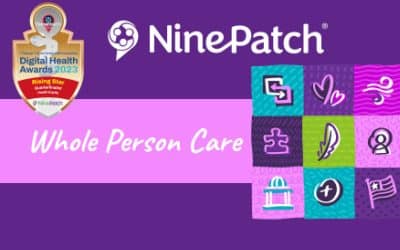Health Information Exchange (HIE) Transformation to HDU

A health information exchange (HIE) transformation is underway in the United States. The Office of the National Coordinator for Health Information Technology (ONC) is collaborating with the Centers for Medicare and Medicaid Services (CMS) to advance health data interoperability. Other public, private, and state groups are also contributing to these efforts.
Let’s look at the history of health information exchange (HIE) transformation and the efforts of national and state organizations to advance interoperability.
The History of Health Information Exchanges (HIEs)
According to the California Healthcare Foundation, three major initiatives shaped health information exchange (HIE) transformation efforts. These include:
1) Executive Order 13335, April 27, 2004, established the position of National Coordinator for Health Information Technology (HIT)
2) The Health Information Technology for Economic and Clinical Health Act of 2009 (HITECH) part of the American Recovery and Reinvestment Act (Recovery Act) of 2009
3) HR 3590 the Patient Protection and Affordable Care Act of 2010 (ACA)
A study published in 2009 by Milstein et al., Characteristics Associated with Regional Health Information Organizations, offers results from surveys with regional health information organizations (RHIOs). The project aimed to identify why some RHIOs succeed and others fail.
The summary findings offer how RHIOs can become operational and self-sustaining to support the nationwide exchange of health information. Also mentioned in the article is the $300 million funding from the Recovery Act to support health data exchange which led to advancements in many states.
A Timeline of State Mergers, Consolidations, and Regional Formations of HIEs and HDUs
Health information exchange (HIE) transformation is underway in many states. Some states have well developed HIEs while other states are continuing to advance HIE efforts.
Delaware established the first statewide clinical health information exchange (HIE) in 1997. Since then, mergers or consolidations have occurred in many states, including Michigan, Maryland, Washington DC, West Virginia, Connecticut, and Alaska.
Additionally, the formation of multi state affiliations, consortiums, and membership organizations is ongoing across many states. Many of these efforts extend to community-based organizations that offer support with sdoh assessments and care coordination.
Below is a list of state HIE and HDU efforts.
Arizona/Colorado (Contexture)
Health Current and CORHIO merged on January 1, 2022 to improve the quality and accessibility of health data under the Contexture name. More recently Contexture and Quality Health Network, the regional HIE for Western Colorado, shared at a Civitas Networks for Health event that they are working in coopetition to advance data sharing across the state of Colorado.
Colorado (Quality Health Network)
Quality Health Network (QHN), the western regional Colorado HIE, was formed in 2004 with support from St. Mary’s Hospital and Medical Center. The HIE has advanced social determinants of health (SDOH) efforts through its Community Resource Network platform launched January 2020. Platform users include over 150 health and community based organizations.
Connecticut (Connie)
Connie is the state of Connecticut’s health information exchange. Connie was appointed by state statute and incorporated as a health information alliance in 2019. In 2020 Connie partnered with the Chesapeake Regional Information System for Patients (CRISP).
In 2020, UCONN Health reviewed health information exchanges in Connecticut, Maine, and Rhode Island. A grant from the Office of Health Strategy Connecticut funded the review. The results are shared in a presentation the ‘State’ of Health Information Exchange (HIE) Today and Tomorrow.
Connecticut, Washington DC, Maryland, West Virginia, and Alaska (CRISP)
The Chesapeake Regional Information System for Patients (CRISP) was incorporated as a non-profit and designated by Maryland as the statewide HIE in 2009.
- In 2016 CRISP partnered with West Virginia (WVHIN) and additionally formed CRISP DC.
- In 2020 Connecticut’s Connie HIE became a partner.
- In 2021, CRISP, moved forward with efforts to form a health data utility.
- Also in 2021 the state of Alaska HIE (healtheConnect) joined CRISP Shared Services to save costs and promote innovation.
- In October 2022, CRISP was designated as Maryland’s state health data utility.
Indiana Health Information Exchange (IHIE)
The Indiana Health Information Exchange was established in 2004. The Michiana Health Information Network (MHN) signed an agreement to merge with the organization effective January 1, 2020.
Michigan Health Information Network (MIHIN)
In 2010, Michigan received funding to create the Michigan Health Information Network (MIHIN) as a statewide health information exchange.
Over the years, other state HIEs merged and later integrated with MIHIN Shared Services. For example, in 2014, Michigan Health Connect and Great Lakes Health Information Exchange merged to create Great Lakes Health Connect. In 2019 MIHIN Shared Services integrated Great Lakes Health Connect, a non-profit Michigan HIE.
An article by Devon O’Toole et al. from the University of Michigan offers an early look into the state of Michigan’s HIE system and the functions and definitions of health information systems. The article discusses the benefits of using an HIE to share patient data and share information across electronic health record systems (EHRs).
Nebraska and Iowa (CyncHealth)
CyncHealth, began in 2008 as the Nebraska Healthcare Collaborative (NEHII), a non-profit in Nebraska established to share health information. In January 2021 NEHII was re-branded under the name CyncHealth along with the NEHII Foundation, NEHII Shared Services, and the Iowa Health Information Network (IHIN). CyncHealth is the regional health data utility for Nebraska and Iowa.
Oklahoma (My Health Access Network)
The state of Oklahoma launched a statewide HIE on July 1, 2023 as the result of SB 579 and SB 1364 passed by the state legislature in 2022. My Health Access Network, the statewide HIE, is based in Tulsa, Oklahoma. Efforts continue to gain provider participation.
Not all states have clear plans to create a statewide health information exchange or health data utility. California, Florida, New Jersey, New York, Texas, and Pennsylvania have multiple health information exchanges. As of this article’s date, discussions about creating statewide HIEs and regional HDUs continue.
The Veterans Administration (VHIE)
While states share health information data, the Veterans Administration (VA) has a proprietary health information exchange called VHIE. The VHIE Fact Sheet for consumers discusses the importance of sharing patient information with primary care and other providers in and out of the federal healthcare system.
VA documents and fact sheets confirm that health information exchange supports entities with data that can improve health and reduce care costs. Additionally, benefits of access to data include providing care management, avoiding duplicate testing, and reducing readmissions to the emergency room.
Even in large government systems, there can be issues with implementing medical records systems. Currently, the VA health records program is experiencing patient care and safety challenges, resulting in delays in implementing the new records system.
Advancing the Work of HDUs
Let’s look at organizations advancing the work of HDUs through education and awareness. Clinical health system providers who rely on payer reimbursement are well along in their integration efforts with HIEs and HDUs.
Ancillary service providers, government health and human services, public health, aging service networks, long term care, and other specialty providers are making progress to integrate with HIEs. Examples of two organizations earlier in the process of research, planning, and integrating with HIEs are below.
The ONC SDOH Toolkit
In 2023, the Office of the Coordinator for Health Information Technology (ONC) released a tool kit for sharing information about social factors that affect health, like housing and education.
There are three community information exchange networks mentioned as resources. These networks are 211 San Diego CIE®, Connect2 Community Network, and Quality Health Network/Community Resource Network (CRN). Data Across Sectors for Health (DASH) and the Centers for Disease Control (CDC) were also mentioned as resources in the toolkit.
Social health information networks (SHINS) and social determinants of health networks (SDHNs) are community-based networks that connect with HIEs to support whole-person care coordination and closed loop referrals. Colorado, California, Oregon, New York, and many other states have recognized the importance of establishing social care networks to link with health, behavioral health, and mental health providers for individual and family benefit.
The Consortium for State and Regional Interoperability (CSRI)
On February 4, 2021, HIEs from California, Colorado, Indiana, Maryland, and Nebraska formed the Consortium for Regional and State Interoperability (CSRI) to support steps for the continued transformation of HIEs to health data utilities (HDUs). In April of 2023, these organizations launched a Health Data Maturity Model that will continue to be updated.
Civitas Networks for Health
In 2021, the Strategic Health Information Exchange Collaborative (SHIEC) merged with the Network for Regional Health Improvement (NRHI) to form the Civitas Networks for Health. In 2023 Civitas in participation with the Maryland Health Commission published a Health Data Utility Framework Guide for Implementation.
Leading Age
Leading Age is a community of non-profit aging service organizations. The organization published a HIE Primer to educate aging and community-based organizations about the benefits of data sharing that include care coordination, the ability to access the right information at the right time, reduce errors, minimize duplicate tests and procedures, and improve population health.
Long-term and post-acute care (LTPAC) provider participation in HIE activities lags behind the rest of the healthcare sector. Researchers at Texas State University selected and reviewed 22 articles for common themes about the challenges of HIE integration in long term care facilities. Results concluded that the largest facilitator and barrier to the adoption of HIE mechanisms is workflow integration and augmentation in addition to organizational structure and culture.
The California Aging Network
The California Department of Aging and the California Aging Network are in the process of developing a future-ready California Aging Network to proactively prepare to serve a larger, older, and more diverse population of older Californians. To prepare, CDA launched CA2030 and is convening leaders in aging services to identify opportunities for Area Agency on Aging (AAA) network-wide advancement and enhancement.
A July 2023 webinar shares research completed by Collaborative Consulting that will translate into statewide recommendations. The importance of providing whole person care, addressing homelessness, mental and behavioral health, and using technology to advance data sharing within the aging and health networks are discussed.
Join Us to Advance Education and Awareness About Health Information Exchange (HIE) Transformation and Health Data Utility (HDU) Efforts
As you can see, efforts for health information exchange (HIE) transformation are well underway. Segments of clinical and social care are beginning to convene in many states to advance the exchange of health and social data. Other states are well on their way with the deployment of social care networks connecting health, behavioral health, mental health and community-based organizations. Still, there is much work to be done.
Please contact us if your state or organization has a HIE or HDU effort you would like to share. NinePatch seeks to be a trusted resource for information and education for clinical and social care providers, our customers, software users, colleagues, and anyone interested in social determinants of health efforts.
If you are interested in learning more about how NinePatch SDOH solutions support HIEs and HDUs we invite you to request a demo today.
Stay Up To Date
NinePatch® Recognized as Quarterfinalist for the Digital Health Hub Foundation: Digital Health Awards
NinePatch is a Rising Star in the Health Equity Track KNOXVILLE,...
SDOH and Care Coordination Programs and Funding
SDOH care coordination and funding is available from federal, state,...
Whole Person Healthcare Model Insights and Opportunities
A whole person healthcare model combines physical, behavioral, and...




